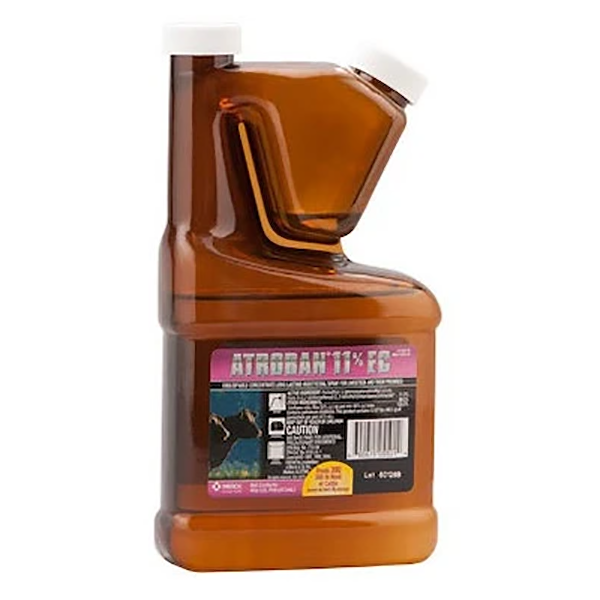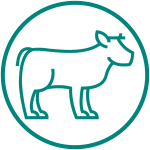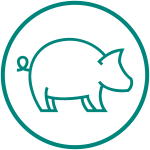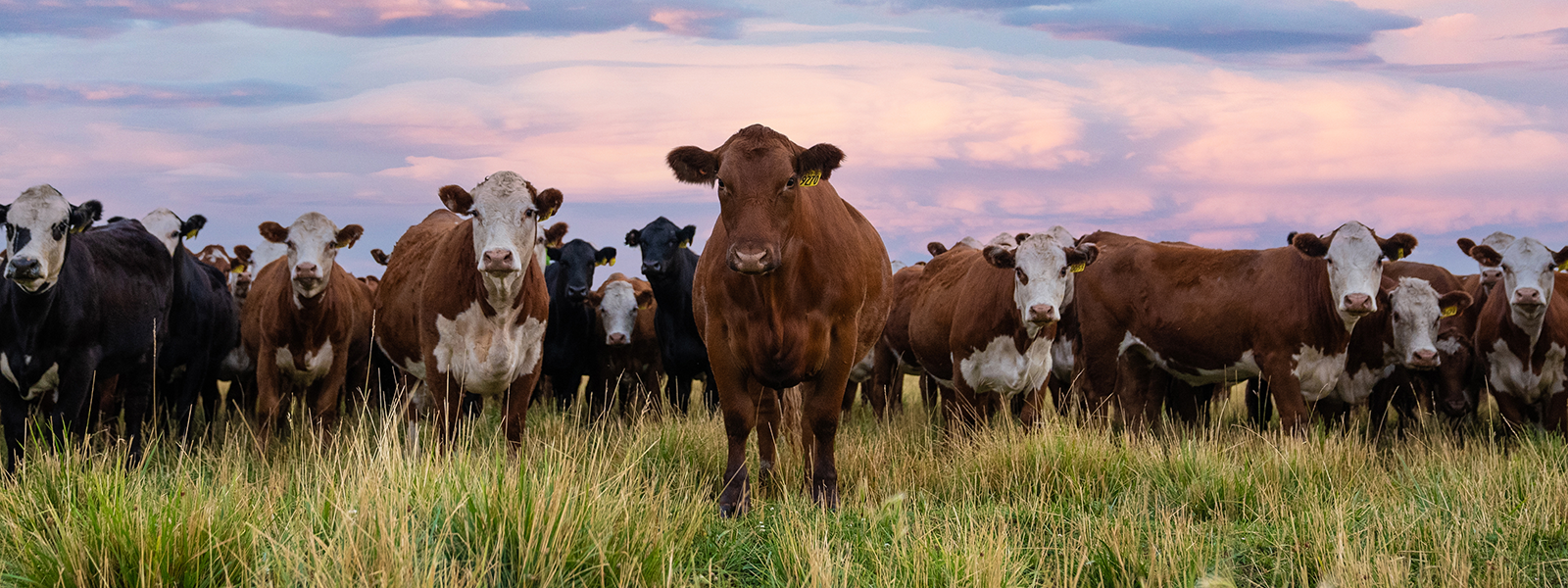ATROBAN® 11% EC
EMULSIFIABLE CONCENTRATE LONG-LASTING INSECTICIDAL SPRAY FOR LIVESTOCK AND THEIR PREMISES
Product Description
Emulsifiable 11 % concentrate long-lasting insecticidal spray or back rubber for livestock (lactating and non-lactating dairy cows, goats, beef cattle, horses, and sheep, as well as a premise spray.






Use Restrictions
Except when applying to livestock:
- Do not apply this product in a way that will contact adults, children, or pets, either directly or through drift.
- Only protected handlers may be in the area during application.
- Do not enter or allow or allow others to enter treated area until sprays have dried.
- Do not enter or allow other to enter treated area until vapors, mists, and aerosols have dispersed, and the treated area has been thoroughly ventilated.
When used in dairy barns or facilities: Close milk bulk tank lids to prevent contamination from spray and from dead or falling insects. Remove or cover milking utensils before application. Wash teats of treated animals before milking.
Not for use in outdoor residential misting systems (indoor or outdoor).
Mix ATROBAN® 11% EC thoroughly according to the following table: Repeat applications as needed but not more often than once every two weeks.
Spray lactating dairy animals only after milking is completed. Use as needed on horses not intended for human consumption.
LACTATING AND NON-LACTATING DAIRY CATTLE AND GOATS, BEEF CATTLE, HORSES, AND SHEEP
| Target Species | Use | Dilute | Application Rate |
| Horn flies only | Sprayer | 1 pt to 50 gals water (3 tbsp/5 gals) OR 1 qt to 100 gals water (6 tbsp/10 gals) | 1 qt of coarse spray per animal. |
| Horn flies, Face flies Stable flies, House flies, Horse flies, Black flies, Mosquitoes, Eye gnats, Mange mites, Scabies Mites, ticks, lice, Sheep keds | Sprayer | 1 pt to 25 gals water (3 tbsp/2.5 gals) OR 1 qt to 50 gals water (6 tbsp/5 gals) | 1-2 qts of coarse spray per animal over whole body surface. For mange, scabies, ticks, and lice, thoroughly wet animal. Repeat application in 10-14 days for mites |
| Horn flies, Face flies, Stable flies, Ear ticks | Low pressure sprayer | 1 pt to 2.5 gals water (3 tbsp/qt) OR 1 qt to 5 gals water (6 tbsp/1/2 gal) | 1-2 oz spray per animal. Spot treat back, face, legs, and ears |
| Horn flies, Face flies, Stable flies | Back rubber/Self oiler | 1 pt to 10 gals diesel oil (3 tbsp/gal) OR 1 qt to 20 gals diesel oil (6 tbsp/2 gals) | Keep rubbing device charged. Results improved by daily forced use. |
POULTRY
| Target Species | Use | Dilute | Application Rate |
| Northern fowl mites Lice | Sprayer | 1 pt to 25 gals water (3 tbsp/2.5 gals) OR 1 qt to 50 gals water (6 tbsp/5 gals) | 1 gal of coarse spray per 100 birds, paying particular attention to vent area. |
SWINE
| Target Species | Use | Dilute | Application Rate |
| Lice, mange | Sprayer | 1 pt to 25 gals water (3 tbsp/2.5 gals) OR 1 qt to 50 gals water (6 tbsp/5 gals) | Thoroughly wet animals, including ears. For mange, repeat at 14 days. |
For swine, allow 5 days between last treatment and slaughter.
PREMISES – in and around horse, beef, dairy, swine, sheep, and poultry premises, animal hospital pens and kennels, and outside meat processing premises.
NOTE: This product is not recommended for use on vinyl or plastic surfaces.
| Target Species | Use | Dilute | Application Rate |
| House flies, Stable flies, Little house flies (Fannia spp). Aids in control of cockroaches, ants, spiders, mosquitoes, cricket, Face flies | Sprayer Overhead space spray system | 1 pt to 10 gals water (3 tbsp/gal) OR 1 qt to 20 gals water (6 tbsp/2 gals) 1 pt to 10 gals diesel or mineral oil (3 tbsp/gal) OR 1 qt to 20 gals diesel or mineral oil (6 tbsp/2 gals) | Spray to point of runoff or 1 gal per 750-1000 sq ft. 4 oz spray per 1000 cu ft of air space |
Do not apply dilutions for premise treatment directly on livestock or poultry. Ensure that animals’ feed and water are not contaminated by spray drift. For space spraying, do not remain in treated areas and ventilate the areas before reoccupying. Animals should be removed from areas prior to treatment. Do not use in milk rooms. The use of any residual fly spray should be supplemented with proper manure management and general sanitation to reduce or eliminate fly breeding sites.
Storage
Store in a cool, dry place.
Storage And Disposal
Do not contaminate water, food, or feed by storage or disposal.
Supplied
One U.S. Pint (473 mL) Treats 200 550 lb Cattle based on horn fly dosage
One U.S. Quart (946 mL) Treats 400 550 lb Cattle based on horn fly dosage
Active Ingredient
11% Permethrin: 3-(phenoxyphenyl)methyl (±)-cis, trans-3-(2,2-dichloroethenyl)-2, 2-dimethylcyclopropanecarboxylate*
*cis/trans ratio: Max 55% (±) cis and min 45% (±) trans
Contains petroleum distillates.
This product contains 0.107 lbs (48.5 g) of permethrin per pint (473 mL).
Caution
KEEP OUT OF REACH OF CHILDREN. HAZARDS TO HUMANS AND DOMESTIC ANIMALS: CAUTION: Causes moderate eye irritation. Avoid contact with eyes or clothing. Prolonged or frequently repeated skin contact may cause allergic reaction in some individuals.
Harmful if absorbed through skin. Avoid contact with skin, eyes, or clothing. Wear long sleeved shirt, long pants, shoes and socks, and chemical resistant gloves such as barrier laminate, nitrile or neoprene rubber, or viton. Prolonged or frequently repeated skin contact may cause allergic reactions in some individuals.
Contact
U.S. only: Merck Animal Health livestocktechsrvc@merck-animal-health.com or call 1-800-211-3573
For more information regarding efficacy and safety data, go to productdata.aphis.usda.gov
For additional information, please see the product label.

Get the latest updates! Sign up to receive cattle health management insights, industry news and more sent straight to your inbox.
